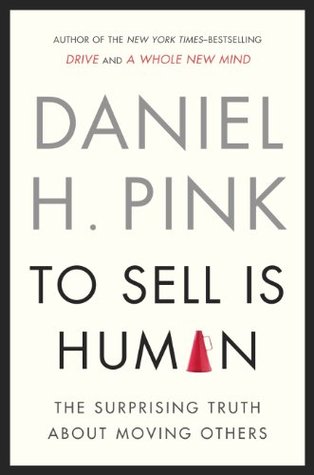More on this book
Community
Kindle Notes & Highlights
One of the most effective ways of moving others is to uncover challenges they may not know they have.
Make it personal and make it purposeful.
The ability to move others
balletomanes
“Pixar pitch.” Built on the work of Hollywood’s famed animation studio, the technique involves offering a short summary of the point you’re trying to make, rendered in the narrative structure of a Pixar film.
A world of flat organizations and tumultuous business conditions—and that’s our world—punishes fixed skills and prizes elastic ones.
The Future Project, a nonprofit that connects secondary school students with interesting projects to adults who can coach them.
Ed-Med—which includes everyone from community college instructors to proprietors of test prep companies and from genetic counselors to registered nurses—is now, by far, the largest job sector in the U.S. economy, as well as a fast-growing sector in the rest of the world.
To sell well is to convince someone else to part with resources—not to deprive that person, but to leave him better off in the end.
to move people a large distance and for the long term, we have to create the conditions where they can move themselves.”
Irritation, he says, is “challenging people to do something that we want them to do.” By contrast, “agitation is challenging them to do something that they want to do.”
to move people fully and deeply requires something more—not looking at the student or the patient as a pawn on a chessboard but as a full participant in the game.
“It’s about leading with my ears instead of my mouth,” Ferlazzo says. “It means trying to elicit from people what their goals are for themselves and having the flexibility to frame what we do in that context.”
“Girard’s Rule of 250”—that each of us has 250 people in our lives we know well enough to invite to a wedding or a funeral. If you reach one person, and get her to like you and buy from you, she will connect you to others in her 250-person circle. Some of those people will do the same. And so on and so on in ever-widening cascades of influence.
She’s petite, friendly, and semi-intense, though the intense part seems natural and the semi- an effort.
They’re the curators and clarifiers of it—helping to make sense of the blizzard of facts, data, and options.
honesty, directness, and transparency—has become the better, more pragmatic, long-term route.
Attunement is the ability to bring one’s actions and outlook into harmony with other people and with the context you’re in.
those who’d received even a small injection of power became less likely (and perhaps less able) to attune themselves to someone else’s point of view.
“power leads individuals to anchor too heavily on their own vantage point, insufficiently adjusting to others’ perspective.”3
Perspective-taking is a cognitive capacity; it’s mostly about thinking. Empathy is an emotional response; it’s mostly about feeling. Both are crucial.
“Taking the perspective of one’s opponent produced both greater joint gains and more profitable individual outcomes. .
Empathy, meanwhile, was effective but less so “and was, at times, a detriment to both discovering creative solutions and self-interest.”5


